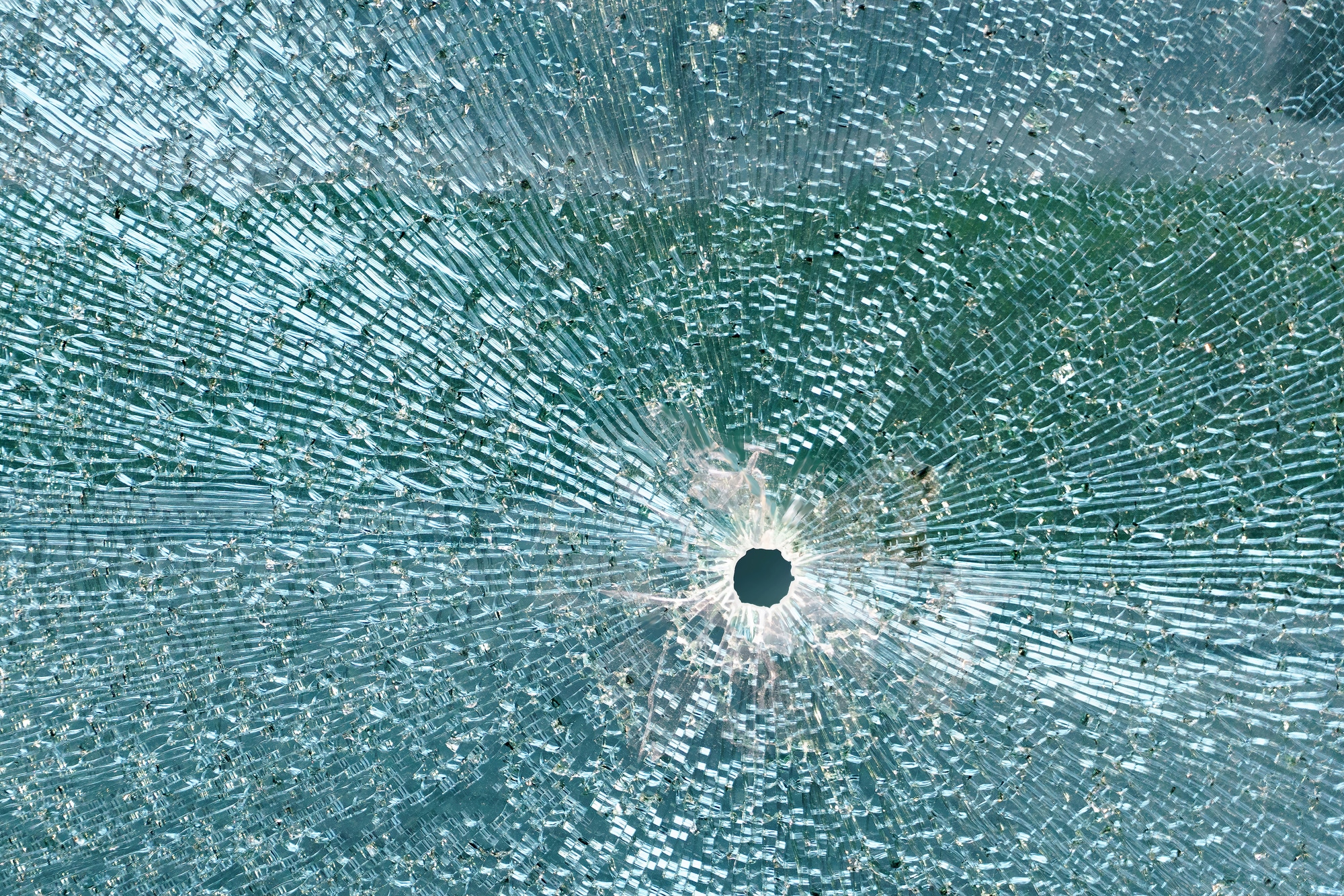Bulletproof glass is one of the most impressive security advancements in the last few decades. It can be found in almost every commercial building, and now it’s becoming more common in residential applications. How does it work, and what is the science behind this unique invention? There’s a lot to it. Here’s what people should know about bulletproof glass to ensure their and their possessions’ safety.
Is Bulletproof Glass Really Bulletproof?
First, it’s important to answer the underlying question: Is bulletproof glass really bulletproof? The answer is both yes and no. Bulletproof glass is not 100% impenetrable, but it can withstand multiple shots before cracking by absorbing the energy from the bullets upon impact. It’s a valuable extra line of defense against armed intruders but not a forcefield.
The strongest bulletproof glass ever made is a Level 8 on the Underwriter’s Laboratories’ (UL) ballistics scale, or a Level III on the National Institute of Justice’s scale. That means it can stop multiple rounds from a 7.62 mm rifle before breaking. It can also stop weaker types of ammunition such as 9 mm, .44 magnum, .30 caliber and 5.56 mm, even with full metal jackets.
Although bulletproof glass won’t stop all projectiles, it can still protect people from common pistols and rifles. It will also provide an extra few seconds for self-defense, which could make the difference between life and death.
How Does Bulletproof Glass Work?
Bulletproof glass has multiple layers — one of regular glass and one or more of polycarbonate. A thin urethane or polyvinyl butyral (PVB) membrane separates each layer for extra support. The standard thickness of polycarbonate bulletproof glass is ¾-1 ¾ inches thick.
Some bulletproof glass also utilizes monolithic acrylic instead of polycarbonate. This plastic material is a solid sheet of acrylic thermoplastic, ranging from 1 ¼-1 ⅜ inches thick. This variety also has urethane or PVB membranes for improved strength and flexibility. The glass and plastic layers are fused under high pressure and temperatures.
The polycarbonate or acrylic absorbs a bullet’s force and velocity, bringing it to a sudden stop. The breaking glass from the first layer also assists in slowing the bullet upon impact. The average bullet travels at about 1,700 mph, so every layer must contribute to slowing it down.
Bulletproof glass has other relevant functions. It’s also strong enough to withstand blunt-force weapons such as hammers and baseball bats that intruders often use during home break-ins. It can stop flying debris such as stones and tree branches during extreme weather events. It might get a few cracks, but it won’t shatter.
Although bulletproof glass is most often found in large commercial buildings, it can also be installed in vehicles or domiciles. For example, Return Fire bulletproof glass is available for residential doors for bunkers, safe rooms, storm shelters and other unique applications.
There is one major weakness of bulletproof glass. Bullets shot from inside the building can penetrate through the glass because they strike the plastic layer first. The glass then breaks outward instead of inward, allowing the bullet to pass through with little to no energy loss. People can only rely on bulletproof glass to protect them against external threats.
Types of Bulletproof Glass
Not all bulletproof glass is created equal. It’s vital to select the right type for businesses or residences. There are four main options, each with different protection levels.
1. Acrylic Glazing
This type of bulletproof glass, also known as ballistic glass, contains a simple layer of glazed solid acrylic. It can withstand bullets from small- and large-caliber handguns, but not high-powered rifles. It’s the cheapest and most widely available type, so it’s the most financially feasible option for those on a budget.
Acrylic is also affordable because it’s easy to cut and work with. People experienced with DIY renovations might be able to install acrylic bulletproof glass by themselves.
2. Laminated Polycarbonate
Laminated polycarbonate consists of thinner plastic layers but provides more protection than acrylic glazing. That’s because the polycarbonate, plus the additional urethane or PVB membranes, offer more flexibility and greater bullet resistance. It can stop up to Level 3 firearms on the UL ballistics scale, or .44 magnum bullets.
Although laminated polycarbonate is strong, flexible and lightweight, it’s also prone to warping and scratching if not cleaned properly. Preventive maintenance is especially important for this type of bulletproof glass.
3. Glass-Clad Polycarbonate
GCP consists of the same polycarbonate layers and membranes, with one crucial addition: a layer of real glass. This feature makes the product more visually appealing and takes it to a new level of strength. GCP can reach up to Level 8 on the UL ballistics scale — the strongest glass available.
GCP has the same maintenance requirements as laminated polycarbonate. The outer layer must be kept clean to prevent abrasions and avoid creating weak spots in the glass.
4. Insulated Glass
Insulated bulletproof glass has the same protection level as GCP but has better energy efficiency and helps with indoor temperature control. These benefits come from small air gaps between the polycarbonate layers.
Although each type of glass is strong enough to stop low-caliber bullets, they can be made even stronger with a few simple adjustments. People can add an abrasion-resistant coating to the exterior for increased durability against extreme weather. They can also install additional polycarbonate safety shields or security films over the existing glass.
Common Bulletproof Glass Applications
Bulletproof glass is most often used in large commercial buildings, such as schools, offices and shopping centers, but it has several other interesting applications.
1. Home Security
Bulletproof glass has become an increasingly popular part of home security, protecting families against burglaries and extreme weather events. Acrylic is the most common ballistic glass for this application because of its affordability, ease of use and ability to adapt to existing window frames.
However, even the strongest bulletproof glass will not protect a home from explosives. It might stop some of the shrapnel but not the brunt of the blast. People seeking protection from all types of weapons must create at least a 36-inch barrier between their shelter and the outside.
2. Armored Vehicles
All military personnel drive armored vehicles, whether or not they’re in designated combat zones. Government officials and other public figures also rely on cars with bulletproof glass for much of their transportation. The most common example is the Popemobile, which has had many bulletproof glass variations over the years.
Bulletproof glass is also available for private vehicles, with installation costs ranging from $3,000 to $20,000 depending on the car and the glass’s level of protection.
3. Disaster Preparedness
Insulated bulletproof glass is a fantastic upgrade to storm shelters because of its weather resistance and climate control abilities. Small places get hot and stuffy because of the cramped space, but insulated windows allow for a little more airflow. Their transparency is also on par with acrylic windows, so people get as much natural light as possible.
Protect Loved Ones and Belongings
Bulletproof glass isn’t the impenetrable force field everyone wishes it could be, but it still offers sufficient protection from most pistols and rifles. It would make a great addition to a home, business or vehicle. People should explore the different glass options and decide which variety will best help protect their loved ones and belongings.


